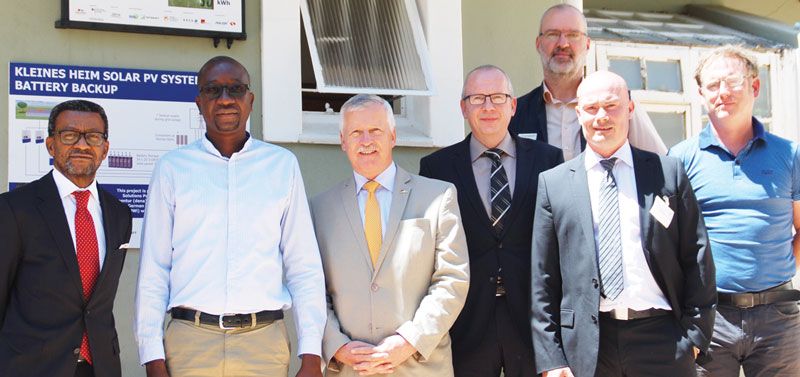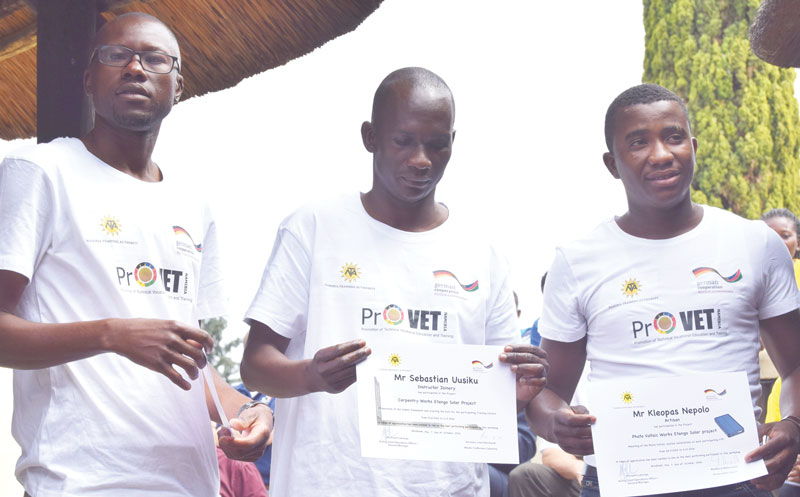
A well-regulated and managed in-situ recovery process in uranium mining should be safe – Lane

Controversies around the uranium project by Headspring Investments in Namibia could block the possible application of the most advanced method of in-situ recovery (ISR) said the Executive Director of Australia-based company, GTI Resources, Bruce Lane.
GTI Resources is engaged in the exploration of mineral tenements for ISR uranium in Namibia. The main concern of the opponents of the project in Namibia is about the possible environmental effects of uranium mining on the Stampriet Transboundary Aquifer System (STAS). Lane has provided his thoughts on some crucial issues in the Namibian project:
Q: As you surely know, within the past few months a discussion has been unfolding in Namibia against the uranium mining project announced by Headspring Investments Co. Although the company presented detailed arguments in favour of using the ISR method in Namibia, the current situation is ambiguous. What is your opinion about the ISR method? Is it really an environmentally friendly way of uranium mining?
Generally speaking, ISR mining is significantly less destructive to the environment especially when an alkaline lixiviant (leaching) solution is used. I believe it can be the most environmentally friendly mining method so long as groundwater is not contaminated as a result. Moreover, the ISR method definitely can comply with the international ESG principles, i.e. Environmental, Social and Governmental responsibility of investments.
Q: How are territories for uranium mining by the ISR method selected? Are there any special criteria for this?
ISR projects are usually selected based on amenable rock types (e.g. sandstones) with sufficient widths & grades of mineralization, and conducive geotechnical & geo-hydrological factors. Mining, generally speaking, takes place sufficiently far enough below the local water table level so as to not interfere with groundwater flows & systems.
Q: Indeed, water matters a great deal in the Namibian case. There is a statement that contaminated water can be treated as long as the aquifer is confined but it is highly complicated and extremely expensive, referring to the Königstein project in East Germany, which took 30 years and Euro 6.5 billion. How relevant, to your mind, is this example? Königstein is the uranium project on the territory of the former GDR, implemented about half a century ago. Has the ISR method really come a long way since then? And is the process of contaminating water much easier now?
Decontamination of the water is conducted when the uranium pregnant leach liquor is pumped out of the well to the surface. Uranium is then stripped from the water using either solvent extraction (SX) or ion extraction (IX) with the environmentally benign IX process being preferred. Once the uranium is stripped from the solution, the remaining water flows through a water treatment plant after which the now clean water is returned to the ground from whence it came. The water quality standards required are determined by the regulator in the specific jurisdiction and the requirement can be for potable (drinking) quality water to be injected back into the ground. Modern water treatment techniques & plants are very effective at denominating water and bringing it up to potable quality. Drinking water in many parts of the world is created from wastewater by industrial-scale decontamination through water treatment plants using the same/similar technology.
Q: As your company operates in the US, could you tell us more about the American authorities’ requirements for using the ISR method? Does the business involved provide guarantees for the safety of groundwater?
It depends on the jurisdiction, but the standards are very high and require groundwater to be rehabilitated, the company usually has to provide an environmental bond to cover some of these costs There can, in some unique circumstances, be issues with heavy metal residues which require additional management, particularly when using an acid lixiviant (acid lixiviants are generally less common in Wyoming where GTI operates).
Q: Furthermore, the local farmers in Namibia are scared that 1-3% of the dissolved uranium remains in the recycled solution and is not removed by the surface processing plant. Does uranium remaining in the soil pose a critical hazard after the mining is completed?
Uranium levels are generally reduced through the mining/extraction process – anything that remained would/should be injected back underground and would in any case be below background (normal) uranium levels and well below any level that would create a hazard.
Q: Are there any invisible radioactive effects of the uranium mining by the ISR method beyond possible soil and water contamination? Does the ISR method allow people to avoid health risks totally?
I believe that health risks are virtually non-existent if the process is well run and well-regulated especially if an alkaline lixiviant & IX process is used. A well-managed, regulated and monitored ISR process using SX and acid lixiviant should be safe.











































